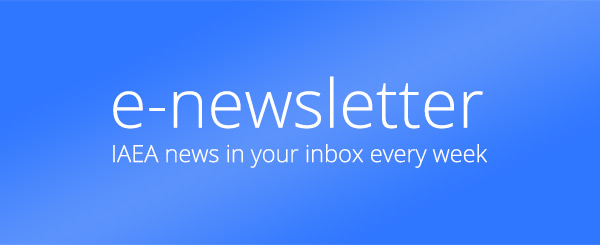The IAEA’s flagship cancer initiative, Rays of Hope – which is bringing hope to women around the world by enhancing their access to diagnosis and treatment – was the focus of a side event at the UN’s annual commission on women.
Co-organized with Guyana, Jordan, Malawi, Nigeria and Pakistan, the event brought together member countries, United Nations entities and civil society organizations to explore how Rays of Hope delivers safe and effective cancer care where it is needed the most.
A subsidiary body of the United Nations Economic and Social Council, the Commission on the Status of Women is the principal intergovernmental body dedicated to gender equality, women’s rights and empowerment. This year’s annual session marks 30 years since the landmark 1995 Beijing Conference on Women, which pledged to achieve gender equality and uphold women’s rights.
“There are very few, or no one, here who does not know someone who is battling cancer or have not lost loved ones to it,” Vivian Okeke – Representative of the IAEA Director General to the United Nations and Director of the IAEA Liaison Office in New York – emphasized in her introductory remarks. “For those in developing countries, the diagnosis of cancer could mean a death sentence as the facilities for treatment are often unavailable or inadequate. For women and girls, the risk of such diagnoses is further exacerbated by cultural barriers and economic crises.”
Despite cancer claiming over 4 million women’s lives in 2022, only 20.9 per cent of countries met the minimum resource requirement for radiotherapy, a key cancer treatment. “The Lancet Oncology Commission on Radiotherapy and Theranostics showed that low-income countries on average need over eight times the number of machines they currently have, to meet the target of one per 500 patients. For these settings, one machine serves over 15.6 million people whereas this ratio becomes one per 130 000 in their high-income counterparts,” noted May Abdel-Wahab, Director of the IAEA Division of Human Health. “The 2022 cancer workforce also has to expand by more than 60 per cent just to meet the cancer burden of 2050 – 16.3 million new cases and 8.0 million deaths for women alone.”
“This work is not just about healthcare services. It is about creating an environment where women feel empowered to seek help,” emphasized Vindhya Persaud, Minister of Human Services and Social Security of Guyana. “Through collective efforts, we can ensure that no woman faces cancer in silence – that every woman has access to the resources she needs.”
To address this disparity, IAEA Director General Rafael Mariano Grossi launched Rays of Hope in February 2022, to expand access to cancer care where it is needed most. The initiative leverages the IAEA’s six decades of expertise in diagnostic imaging, nuclear medicine, radiotherapy, and medical physics, supporting countries through technical assessments, economic evaluations, equipment provision, and capacity building via technology transfers and training. Tangible progress includes new public facilities, diagnostic and therapeutic equipment deliveries, and medical professional training—enabling timely diagnoses, screenings and treatments for women, participants heard.








